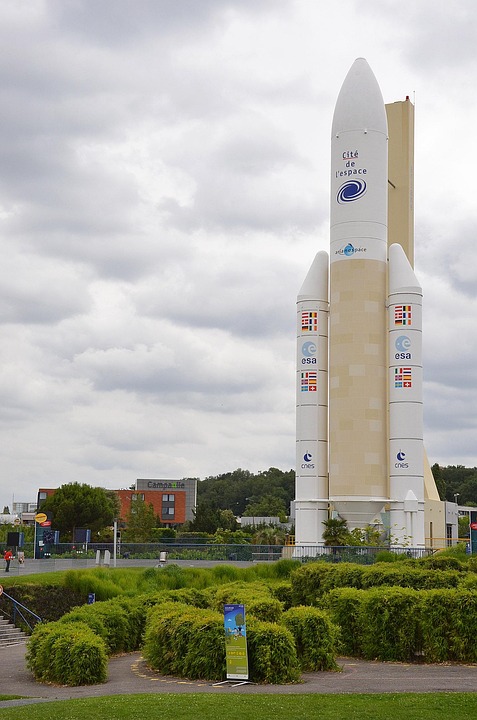Empowering Creativity: The Rise of Gaming Metaverse Development Tools for Creators
The gaming metaverse is rapidly evolving into a dynamic, immersive digital frontier where players, developers, and creators can interact, build, and explore environments that transcend traditional boundaries. As this space grows, so does the need for robust development tools that empower creators to design, deploy, and monetize their virtual experiences. From 3D engines to blockchain platforms, the ecosystem of tools is expanding to meet the demands of a decentralized, persistent, and collaborative digital world. For creators, whether seasoned developers or newcomers, these tools are becoming the backbone of innovation in the metaverse.
Understanding the Gaming Metaverse
The gaming metaverse refers to interconnected virtual spaces where users can engage in real-time, persistent interactions, often across multiple platforms. It combines elements of video games, augmented reality (AR), virtual reality (VR), and blockchain technology to create shared, user-driven ecosystems. These environments support everything from social gatherings and virtual economies to complex multiplayer games, making them a hotbed for creativity. At the heart of this transformation are the tools that enable creators to bring their visions to life.
Key Development Tools for Metaverse Creators
1. 3D Game Engines: The Foundation of Immersive Worlds
Game engines are the backbone of metaverse development, providing the frameworks to build interactive, visual-rich environments. Two of the most prominent engines are Unity and Unreal Engine, each offering unique capabilities:
- Unity: Known for its versatility, Unity supports 2D and 3D game development and has a strong focus on cross-platform compatibility. Its Unity Virtual Reality (VR) and Augmented Reality (AR) tools allow creators to build experiences for headsets like Oculus and HoloLens. Unity’s Multiplayer and Netcode for GameObjects (NetCode) facilitate scalable multiplayer interactions, essential for metaverse games.
- Unreal Engine: Popular for its high-fidelity graphics, Unreal Engine’s Nanite and Lumen technologies enable massive, detailed worlds without compromising performance. Its MetaHuman tool streamlines character creation, while Spatial OS (now part of Unity) supports large-scale multiplayer environments.
Both engines integrate with WebXR and Web3 technologies, allowing creators to deploy experiences on web browsers and blockchain-based platforms.
2. Blockchain and NFT Platforms: Building Decentralized Economies
The metaverse’s emphasis on ownership and decentralized economies has led to the rise of blockchain tools. Platforms like Ethereum, Polygon, and Solana provide infrastructure for non-fungible tokens (NFTs) and decentralized finance (DeFi) integrations.
- OpenSea and Rarible are marketplaces for trading NFTs, while Solidity (Ethereum’s programming language) enables smart contracts for in-game assets and transactions.
- Decentraland and The Sandbox are metaverse platforms that offer built-in tools for creators to design virtual land, games, and experiences using React or Unity.
These tools allow creators to monetize their work through NFTs, virtual real estate, and tokenized in-game items, fostering a new era of digital ownership.
3. VR/AR Development Frameworks: Bridging Physical and Digital Realms
Immersive technologies are central to the metaverse, and tools like Unreal Engine’s XR Interaction Toolkit or Unity’s XR Developer Toolkit simplify the creation of VR/AR experiences. These frameworks support headset compatibility, spatial audio, and gesture-based interactions, making it easier to design environments that feel tangible. For example, Oculus SDK and ARKit/ARCore (Apple and Google’s AR platforms) enable developers to craft interactive elements for augmented reality.
4. No-Code/Vertical-Code Tools: Democratizing Creation
Not everyone has a background in coding. Tools like Roblox Studio, Twine, and Scratch allow creators to build games using drag-and-drop interfaces or visual scripting. Enscape and V-Ray are also popular for real-time rendering, enabling creators to visualize their work without deep technical expertise. These platforms lower the barrier to entry, fostering a diverse creator base.
5. Asset Creation and Marketplace Integration
3D modeling tools like Blender, Maya, and Sketchfab are essential for creating assets, which can then be imported into engines. Marketplaces like Unity Asset Store and Unreal Marketplace provide pre-made assets, animations, and plugins, saving time and resources. For metaverse projects, tools like Decentraland’s Builder or The Sandbox’s Voxel Editor let creators design and deploy assets directly within the platform.
The Role of AI in Metaverse Development
Artificial intelligence is revolutionizing how creators design and manage metaverse experiences. AI tools like AutoCAD for procedural generation, Runway ML for content creation, and MidJourney for generating NFT art are becoming integral. Additionally, AI-driven NPCs (non-player characters) and procedural storytelling systems enhance player engagement. Platforms like Unity’s AI-powered tools and Unreal Engine’s MetaHuman allow for realistic character interactions, while machine learning frameworks like TensorFlow or PyTorch help optimize performance and adapt environments in real time.
Challenges and Considerations for Creators
Despite the advancements, metaverse development presents challenges:
- Technical Complexity: Creating seamless, large-scale experiences requires expertise in graphics, networking, and blockchain.
- Interoperability: Standards for cross-platform compatibility are still in flux, making it difficult to move assets or avatars between different metaverse ecosystems.
- Monetization Hurdles: Balancing in-game economies, ensuring fair NFT pricing, and navigating regulatory concerns remain tricky.
- Scalability: Ensuring performance across thousands of concurrent users demands robust backend solutions like Photon or PlayFab.
Creators must also grapple with the ethical implications of data privacy, user-generated content (UGC) moderation, and the environmental impact of blockchain technologies.
Future Trends and Innovations
The metaverse development landscape is set for exciting evolution:
- AI-Driven Content Creation: Tools that use AI to generate environments, dialogue, or even entire games will become more common.
- Decentralized Identity Systems: Creators may rely on Self-Sovereign Identity (SSI) tools to manage user credentials and data.
- Cross-Platform Standards: Initiatives like Open Metaverse Interoperability (OMI) could unify development practices across platforms.
- Enhanced Collaboration: Real-time collaborative tools, such as Unity Collaborate or Unreal Engine’s Multi-User Editing, will streamline teamwork in virtual spaces.
Conclusion
The gaming metaverse is no longer a distant dream but a vibrant, evolving space driven by innovative development tools. From 3D engines and blockchain platforms to AI and no-code solutions, creators have an array of technologies at their disposal to shape this new digital realm. As the ecosystem matures, the focus will shift toward simplifying workflows, ensuring interoperability, and empowering a broader audience to participate. For aspiring creators, the key lies in embracing these tools, staying adaptable, and contributing to a metaverse that is as diverse and dynamic as the communities it serves.
By leveraging the right tools, creators can turn their visions into reality, fostering a future where the gaming metaverse is not just a playground for players but a canvas for boundless creativity.







